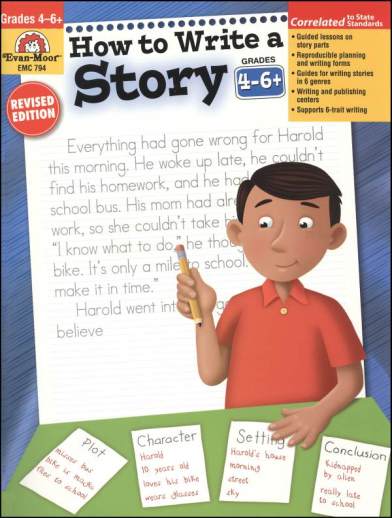We use cookies to make your experience better. To comply with the new e-Privacy directive, we need to ask for your consent to set the cookies. Learn more.
How to Write a Story
Everything you need to take your child from inspiration to publication! Creatively divided into six parts, each section provides great instruction and insight for you, with fun, reproducible worksheets for your children. Part 1 of the workbook teaches children to identify and develop the parts of a story – characters, setting, plot, and conclusion. Parts 2 and 3 provide many forms, sheets, and graphic organizers to guide students step-by-step through the story planning process. Part 4 introduces different genres of writing, such as realistic fiction, historical fiction, mystery, adventure, fantasy, and science fiction. Part 5 includes templates to help students publish their first book as they create illustrations, a title page, a dedication page, and a section about the author, with ideas for binding the story together. Part 6 gives instructions for setting up a writing and publishing center of your own. A scoring rubric is included, based on the Six-Traits writing model. Black-and-white text and illustrations fill the pages of this 95-page, paperback workbook that will help your budding novelist become a confident storyteller in no time!
Lessons and reproducibles to help students learn the parts of a story cover:
- characters
- setting
- plot
- conclusion
Guidelines are presented for writing in six different genres:
- realistic fiction
- historical fiction
- mystery
- adventure
- fantasy
- science fiction
This resource contains teacher support pages, reproducible student pages, and an answer key.
These materials cover various types of creative writing, including descriptive writing, poetry, journaling, and stories.
These materials provide both writing instruction and assignments forwriting stories.
| Product Format: | Softcover Book |
|---|---|
| Brand: | Evan-Moor |
| Author: | Jo Ellen Moore |
| Grades: | 3-6 |
| ISBN: | 9781557998026 |
| EAN/UPC: | 023472007940 |
| Length in Inches: | 11 |
| Width in Inches: | 8.5 |
| Height in Inches: | 0.25 |
| Weight in Pounds: | 0.6 |

